The most important advice for beginners upfront when doing yoga poses is to practice yoga safely. Like any form of exercise if you push yourself too much and overdo things you can get yourself into trouble, but with yoga you can stretch and pull muscles that you didn’t even know you had.
Tips on Yoga Poses for Beginners
Be sure to take your time and learn the yoga poses accurately from a knowledgeable person or video training that can demonstrate the proper form to you. Yoga videos with verbal instructions and follow along demonstrations can work well by helping you to learn the many yoga poses at your own pace.
In other words don’t try to figure yoga out on your own without some good solid instructions.
If you’ve been leading a sedentary lifestyle you need to work into doing yoga poses gradually. A goal many yoga beginners start off with is to do just 15 minutes (less if you are severely out of shape) each day and gradually increase your time as you feel your poses getting easier to do.
Getting Good at Doing Yoga Poses
Trust that you will get better and better at yoga with a little bit of practice and consistency. Be very careful not to push too hard and injure yourself while working your way up slowly from around 15 minutes a day to around 30 minutes a day.
It’s a good idea to wear something comfortable and use an exercise mat, or at least a nice cushy blanket on the floor. Other than that, all you need is some good instructions to follow along with as you learn the various poses.
One of the great things about yoga is that it can fit into your life no matter what shape you are in starting out. You’ll want to be sure to pay close attention to your form and be sure to take time to learn how to do basic postures correctly.
We’ll show you how to do this with a follow along yoga video in a moment.
Yoga Poses can Help Back Pain
Some people will start practicing yoga to help with their back pain and some doctors even recommend it. There are lots of yoga postures that can help eliminate back, hip, shoulder and neck pain. A few common yoga postures that can help out your back area are the forward bend, pelvic tilt and the side angle poses.
Yoga Poses to Help Get Pregnant?
People who are more familiar with yoga will tell you that there are many health benefits associated with its practice. There are even yoga postures that women use for infertility or just to help along the process of getting pregnant for the impatient couple.
Women have reported great results using relaxation yoga poses after sex to help get them pregnant. So yes, yoga poses can help you get pregnant and have a healthy and happy baby.
Yoga Poses Used to Relax You
Taking up yoga can teach you how to De-stress yourself and let your body relax. You’ll learn poses that help you relax all of your body’s muscles and relax your mind at the same exact time. Take your time learning your yoga poses the right way in the beginning so that you’ll forever receive the most value from every yoga pose you do from here on out.
What are the Best Yoga Poses for Beginners?
As a beginner in yoga you run the risk of becoming overwhelmed when first starting out. It seems like there is much to learn when just starting out but a good yoga instructor will tell you that you don’t need to learn it all to start getting results. Take it one step at a time and learn a little something new with each one of your yoga practice sessions.
The best thing that you can do is to learn a few yoga poses first and add more time and new ones as you grow and develop.
Below you’ll find various categories of poses along with a short description on the benefits of each type of pose. From there we’ll finish up by showing you a couple of examples of yoga poses and provide you with some help on putting it all together.
The many benefits that yoga provides are well within your reach so let’s cover what some of common yoga pose categories are and what they’re good for.
What are Standing Yoga Poses?
Standing yoga poses are done in the upright position and help you relieve tension and aches and pains in your body. They are also great for kidney function, circulation and breathing. With consistent practice standing poses can help improve the strength of your neck, shoulder, hips and knees.
What are Seated Yoga Poses?
Seated yoga poses are, as the name implies, done while in a seated position. These are the calming poses that people use to help relieve their stress. These seated poses can help you feel soothed, relaxed and revived. Even though they help you feel less tired many people find that they sleep much better after doing seated yoga poses.
What are Inverted and Balancing Yoga Poses?
The inverted poses are basically “legs up and head down” where this reverse in gravity brings a supply of fresh oxygen rich blood to your heart muscle and head. This pose is beneficial for improving circulation and refreshing tired, achy or swollen legs after a long day of being on your feet.
The balancing yoga poses are very beneficial in developing core muscle strength and greatly improves muscle control, coordination, flexibility and agility. In other words, these are some good poses to work into your sessions as soon as you can.
What are Yoga Side Bend and Twist Poses?
The side bends yoga poses are just that – side bends. These are especially useful for stimulating some of your organs like the kidneys, liver and stomach.
The twist pose is a pose that you can do in a sitting or standing position. Twists are great for strengthening and helping with stiff necks, achy backs, shoulders and even great to help relieve headaches. These can be a bit intense for some people but when done the right way can increase the overall flexibility of your spine.
What are Reclining Yoga Poses?
Reclining yoga poses that are in this group fall primarily into two categories namely, the prone pose and the supine pose.
1.) Prone is done lying on your stomach on the floor facing down, doing poses where you mostly hold yourself on your knees and hands.
2.) The supine poses are just the opposite where you are lying on your back in more relaxed positions. These poses are restful poses that are great to do toward the end your yoga workout session.
What are Forward and Backward Bend Poses?
Forward bend poses uses movements that can help you to strengthen your lower back and your hamstrings and are good for helping you improve digestion and circulation.
Backward bend yoga poses use movements that help improve deeper breathing and have been know to help people with depression. Because of the deeper breathing accomplished in these poses your body and mind will feel more energized and revitalized at the end of the session.
Learn to Breathe Right and Relax Yourself
Learning to breathe correctly needs to be your top priority if it’s not already. So, get a grip on to the fact that besides feeling a little overwhelmed at the many types of yoga poses there are to learn, you’re now being told that you need to occupy your time learning proper breathing techniques.
Learning to breathe right takes some time but only at first and in a short period of time of focusing on your breathing, you’ll be automatically breathing right without even thinking about it. Breathing correctly is so important so do not ignore learning it.
Doing Your First Yoga Pose
Be graceful in your movements and promote flow while doing your yoga poses. The easiest way to say this is to not move from pose to pose but to “flow” from pose to pose in graceful movements such as a dancer or ice skater might do.
There’s no need to follow along with this pose as its only purpose is to give you an idea of how a yoga pose goes. If you’re new, it’s best to use an instructor or instructional yoga video to learn from.
So for the sake of making a choice of one of many yoga poses we could do, let’s demonstrate the Cobra Upward Pose which is a great beginner’s pose because it can be done in a few simple and easily learned steps.
Firstly, lie down on mat or blanket with your forehead to the floor. With your legs stretched backwards pull them closely together. Next, put your hands flat on the floor underneath your shoulders, take a deep breath and begin raising your head pushing your neck and shoulders back while using your hands to push your body up and back until you are holding an arched pose.
Remember to breathe correctly and flow in and out of your pose as you repeat it.
You can see a visual demonstration doing the “Cobra Upward Facing Dog” in this video and even follow along if you like as you learn how to do this simple yet effective pose.
[video_youtube video_url=”http://www.youtube.com/watch?v=OwzHiRxA2eg” width=”480″ height=”300″]
When looking at a pose like that it doesn’t seem so difficult, but if you are new or out of shape, do yourself a favor and only go as far as you can each time and listen closely to what your body is saying to you. Only you can be the judge of what you can or can’t do and even if you want to push yourself, don’t run the risk of injury and setting yourself backwards.
Be Smart and Yoga Poses can Take You a Long Way
The great thing about yoga is that it can be very gentle from all fitness levels as you slowly work your way into it and it can be done virtually anywhere you go. All in all, yoga is a full body workout that can stretch and tone each one of your muscle groups giving you more flexibility and mobility in your everyday life.
Take yoga seriously as it can truly benefit your body, mind and life as a whole. No matter what your physical condition is, there are likely several yoga poses for beginners that you can start doing today and see positive results in a matter of a few short weeks.
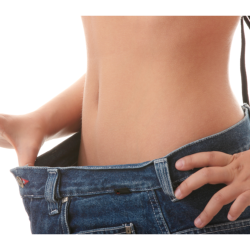


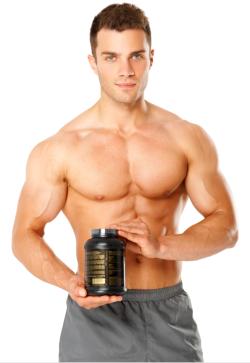
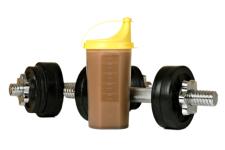 Tips to Build Muscle Mass Faster and Larger
Tips to Build Muscle Mass Faster and Larger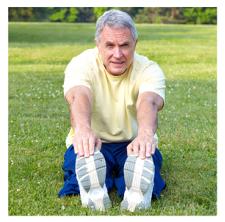
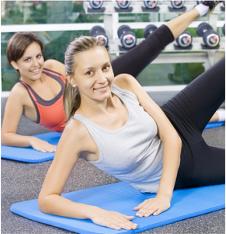
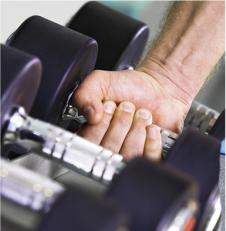 Create a Muscle Building Schedule that Works for You
Create a Muscle Building Schedule that Works for You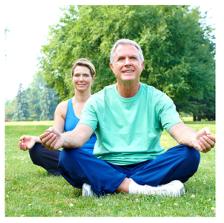 Let’s face it, in today’s hustle and bustle life that many of us lead, finding a good stress reliever is important and yoga is also about deep breathing and relaxation which even on their own promote stress relief, calmness and harmony in your body.
Let’s face it, in today’s hustle and bustle life that many of us lead, finding a good stress reliever is important and yoga is also about deep breathing and relaxation which even on their own promote stress relief, calmness and harmony in your body. The combining of foods is generally pretty easy to understand and this is the basis for this healthy nutrition guide. It all started from the studying of the effects of gastric physiology. It evolved from the understanding of how digestive juices and enzymes truly function and how certain combinations of foods are digested more easily and efficiently than other foods.
The combining of foods is generally pretty easy to understand and this is the basis for this healthy nutrition guide. It all started from the studying of the effects of gastric physiology. It evolved from the understanding of how digestive juices and enzymes truly function and how certain combinations of foods are digested more easily and efficiently than other foods.